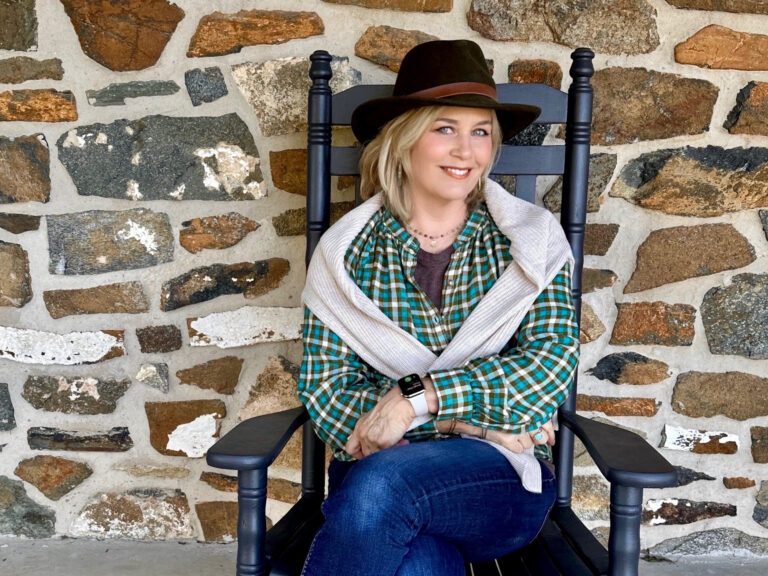About Furniture From The Barn: We're a Pennsylvania-based maker of handcrafted coffee tables built from reclaimed barn wood and premium American hardwoods. Since 2006, we've helped hundreds of families find the right proportions for their living rooms—and after nearly 20 years, we've learned that good sizing isn't about rigid rules. It's about understanding how proportion, reach, and visual presence work together in your specific space.
The reliable starting point: your coffee table should be roughly 2/3 the length of your sofa, positioned 16-18 inches away, at the same height as your seat cushions. Here's how to get it exactly right for your home.
Last updated: October 2025
Why Coffee Table Size Actually Matters
I've seen plenty of living rooms where everything looks right in photos but feels awkward in person. Usually it's because the coffee table is just slightly off—too far to reach comfortably, too close for knees, or visually lost next to a large sofa.
The three measurements that matter:
- Length proportion: The 2/3 rule keeps your table visually balanced with your sofa
- Reach distance: 16-18 inches lets you set down a drink without standing or stretching
- Height alignment: Matching your seat height (or going 1-2 inches lower) makes reaching feel natural
Quick test before you buy: Tape the outline on your floor. Sit on your sofa with a book or mug. If you can reach comfortably and your knees don't feel crowded, your measurements work.
The 2/3 Rule: Your Starting Point
This is the simplest guideline in furniture sizing: take your sofa length and multiply by 0.66 (or roughly 2/3). That's your target coffee table length.
Coffee Table Sizing by Sofa Length
| Your Sofa Length | Target Coffee Table Length | Standard Height | Clearance from Sofa |
|---|---|---|---|
| 72" (6 feet) | 48-52" | 16-18" | 16-18" |
| 78" | 52-56" | 16-18" | 16-18" |
| 84" (7 feet) | 56-60" | 16-18" | 16-18" |
| 90" | 60-64" | 16-18" | 16-18" |
| 96" (8 feet) | 64-68" | 16-18" | 16-18" |
| 108" (9 feet) | 72-76" | 16-18" | 16-18" |
Why 2/3 instead of half or full length? Half the sofa length can look too small—your table gets lost visually. A table as long as your sofa can work, but it often feels heavy and blocks movement. Two-thirds hits the sweet spot: substantial enough to be functional, proportional enough to feel balanced.
Height: Match Your Seat (or Go Slightly Lower)
The rule: Your coffee table should be at the same height as your sofa seat cushions, or 1-2 inches lower.
Most sofas sit around 17-19 inches high at the seat (not the arm height—the cushion height). That's why coffee tables typically range from 16-18 inches tall. But don't assume—measure your actual sofa first.
How to measure correctly: Sit on your sofa normally. Measure from the floor to the top of the compressed seat cushion. That's your target height, or 1-2 inches below it.
One thing I've noticed with our chunkier reclaimed barn wood tables: their visual weight means they can sit on the lower end (16-17 inches) and still feel substantial. A sleek modern table might need to be closer to 18 inches to have presence.
Clearance & Flow: The Space Between
Between your sofa and coffee table: 16-18 inches is the sweet spot.
- Too close (under 14"): Knees feel crowded
- Too far (over 20"): You're stretching to reach
- Just right (16-18"): Natural reach, comfortable legroom
Main walkways: Plan for 30-36 inches between large furniture pieces. If your room is tight, 24 inches is workable but noticeably tighter.
Around the coffee table: If people walk on multiple sides, leave at least 24-30 inches on walking sides.
At the shop, we mock up the footprint with sawhorses before building. Walk through it. Sit with a coffee mug. If it feels cramped in mockup, it'll feel cramped with the real piece.
Shape Selection: Finding Your Best Fit
Rectangular Coffee Tables
Best for: Standard sofa arrangements, traditional or farmhouse spaces
Rectangular tables pair naturally with sofa lines, maximize surface area, and work best for trays, books, and board games. Watch out for sharp corners with young kids and tight traffic areas.


Round Coffee Tables
Best for: Small spaces, families with children, L-shaped sectionals
No sharp corners means safer for kids and easier navigation from any angle. Round tables soften angular furniture and make small rooms feel more spacious. Common sizes: 36-42" diameter for standard rooms; 30-36" in compact spaces.


Square Coffee Tables
Best for: Sectionals (especially L-shaped), square rooms, modern aesthetics
Square tables provide equal access from all sides and create strong, symmetrical geometry. They require more floor space than rectangular and have four corner obstacles. Popular sizes: 36×36" standard; 40×40" or larger for spacious rooms.

Oval Coffee Tables
Best for: Families wanting rectangular surface without corners, narrow rooms
Oval gives you elongated surface area with smooth, corner-free flow. Works beautifully in high-traffic areas with children and transitional decor styles.
Sectional Sofas: Sizing the Center
For L-shaped sectionals: Measure the longer side and apply the 2/3 rule. If your long side is 96 inches, target a 64-68 inch table.
For U-shaped sectionals: Measure the open center space and size your table to fit with 16-18 inches of reach on all seated sides.
Shape recommendations: Round or oval soften angular lines; square works for crisp modern geometry; rectangular can work but watch corner navigation.
Critical rule: Keep 16-18 inches of clearance on every side that has seating.
Small Spaces & Visual Weight Considerations
In compact living rooms (under 150 sq ft), prioritize clearance over surface area. Consider oval or round shapes for better walkability. A table that's 16-18 inches wide instead of 20-24 can give back precious space.
Here's what most guides miss: A chunky reclaimed barn wood coffee table with thick planks and turned legs takes up more visual space than a sleek modern table, even at identical dimensions.
If you're considering one of our farmhouse-style pieces, the character marks, substantial construction, and darker wood create visual presence. You might need to:
- Add an extra inch or two of clearance (shoot for 18" instead of 16")
- Go slightly smaller on length if dimensions are tight
- Choose a lighter finish to reduce visual weight
A glass-top or thin-legged table practically disappears visually—you can often push dimensions larger without crowding.
Our perspective: We love the heft of reclaimed barn wood—that's part of its appeal. But in tighter spaces, we often suggest slightly more generous clearances for our chunkier farmhouse styles.
Reclaimed Wood vs. New Wood for Coffee Tables
At our Pennsylvania workshop, we build with both materials. Here's how they differ for coffee tables:
Reclaimed Barn Wood
The story: Every piece is unique, with 150+ years of character. Nail holes, saw marks, distinctive grain—this is authentic history. Our reclaimed white pine has black knots and weathered patina you can't replicate. Reclaimed oak has tighter grain than modern oak (old-growth quality). Reclaimed chestnut—from trees that went extinct in 1904—is irreplaceable.
The reality: Tends to be chunkier with more visual weight. Commands attention. Generally higher cost due to sourcing complexity and scarcity.
Best for: Farmhouse or rustic aesthetics, conversation pieces with authentic history, families who value sustainability and giving old wood a second life.

New American Hardwood
The appeal: White oak (very popular now), maple, walnut, or cherry give you precision control over color and finish. Clean modern lines, consistent grain, light driftwood aesthetics.
The reality: Lower cost, faster lead times, more design flexibility, lighter visual weight. Same heirloom-quality construction as reclaimed—the choice is purely aesthetic.
Best for: Modern or transitional spaces, lighter finishes, tighter budgets, uniform grain preferences.

How to Measure: The 5-Minute Method
Step 1: Sit normally on your sofa. Measure floor to top of compressed seat cushion. This is your target table height (or 1-2" below).
Step 2: Measure sofa length arm to arm. Multiply by 0.66. That's your target table length.
Step 3: From sofa's front edge, measure out 16 inches. Mark with painter's tape—this is your placement line.
Step 4: Tape the full table footprint (length from step 2, width usually 20-24", placement from step 3).
Step 5: Live with it for a day. Walk around it. Sit with a book and mug. If the tape feels right, the actual table will too.
At-a-Glance: Key Measurements to Remember
- Coffee table length: Approximately 2/3 of your sofa length
- Height: Match sofa seat height, or 1-2 inches lower (typically 16-18")
- Clearance from sofa: 16-18 inches (16" is reliable default)
- Main walkway clearance: 30-36 inches (comfortable); 24" minimum when tight
- Sectionals: Apply 2/3 rule to longest seating run; keep 16-18" from all facing seats
- Small spaces: Prioritize clearance over surface area; consider round or oval shapes
Ready for a Custom Fit?
At Furniture From The Barn, we build every coffee table to order—which means we can dial in your exact proportions. Whether you want the character and story of reclaimed barn wood or the clean beauty of new American hardwood, we'll craft a table sized perfectly for your sofa, your room, and how your family actually lives.
Send us your sofa length, seat height, and room dimensions. We'll sketch out options scaled to your space, recommend shapes and finishes, and make sure you're getting exactly the right proportions before we mill a single board.
View our coffee table collection → furniturefromthebarn.com/furniture/coffee-tables
This guide was written based on nearly 20 years of building custom coffee tables at our Pennsylvania workshop. Measurements and guidelines are drawn from industry standards, interior design best practices, and real-world experience with hundreds of living room layouts. Last updated October 2025.




